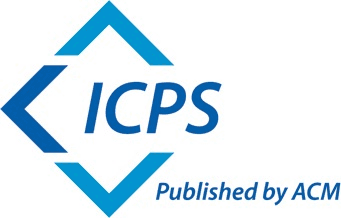Program Protection and Reverse Engineering Workshop (PPREW)
A joint workshop on Program Protection and Reverse Engineering (PPREW) and Software Security and Protection (SSP) will be held this year, bringing two communities of interest together. Software security is a discipline that lies at the crossroads of security, cryptography, networks, software engineering, computer architecture, operating systems, and compiler design. Program protection and reverse engineering techniques both find their practical use in malware research and analysis as well as legitimate protection schemes for intellectual property and commercial software. The joint workshop will focus on how to protect software from tampering, reverse engineering, and piracy. Strongly encouraged are proposals of new, speculative ideas; evaluations of new or known techniques in practical settings; and discussions of emerging threats and problems in metrics, tools, and procedures for evaluating tamperproofing, watermarking, obfuscation, birthmarking, and protection algorithms in general. Likewise, reverse engineering of low-level constructs such as machine code or gate-level circuit definitions through static and dynamic analysis is geared to recover higher levels of abstract information to determine a program's function as well as to classify it with existing similar code (which is typically malicious). Both program protection and reverse engineering techniques are utilized for legitimate and illegal purposes. Theoretically, protection is seen as impossible in the general case but the promise of mathematically based transformations with rigorous cryptographic properties is an area of active interest. Given enough time and resources, reverse engineering and de-obfuscation is assumed to be achievable.
The joint PPREW/SSP workshop will provide a discussion forum for researchers that are exploring theoretical definitions and frameworks, implementing and using practical methods and empirical studies, and those developing new tools or techniques in this unique area of security. We expect the workshop to provide exchange of ideas and support for cooperative relationships among researchers in industry, academia, and government.
Topics of interest include, but are not limited to:
- Securiy modeling
- Protection metrics and measurements
- Obfuscation / Deobfuscation (Polymorphism)
- Tamper-proofing
- Watermarking / Digital fingerprinting
- Reverse engineering tools and techniques
- Program / circuit slicing
- Information hiding and discovery
- Hardware-based protection
- Source code analysis / program understanding
- Forensic analysis and protections
- Virtualization for protection and/or analysis
- New cutting-edge protection technologies
- Diversity metrics and measurements
- Man-at-the-end (MATE) attack technologies
- Theoretical analysis frameworks:
- Abstract Interpretation
- Term Rewriting Systems
- Machine Learning
- Large Scale Boolean Matching
- Homomorphic Encryption
- User interface design for controlling protection
- Static/dynamic analysis techniques
- Moving target and active cyber defense
- Protection profiling, verification, and evaluation
Submissions: Original, unpublished manuscripts of up to 12-pages including figures and references must follow the ACM SIG proceedings format. Papers will be published through ACM International Conference Proceedings Series (ICPS) and available in the ACM Digital Library.
Submission is through EasyChair: https://easychair.org/conferences/?conf=pprew5.
See conference website (http://www.pprew.org) for more details.
Important Dates
| Submission: | September 27, 2015 |
| Notification of Acceptance: | October 25, 2015 |
| Camera-ready: | November 20, 2015 |
| Workshop: | December 8, 2015 |
Organizing Committees
Program Co-chairs
Natalia Stakhanova, Univ of New Brunswick, Canada
Mila Dalla Preda, University of Verona, Italy
General Workshop Chair
J. Todd McDonald, Univ of South Alabama, USA






